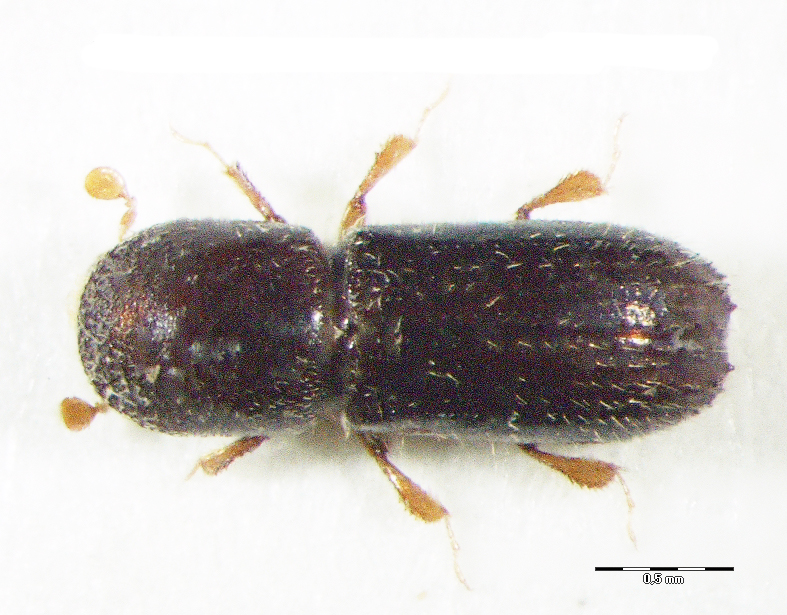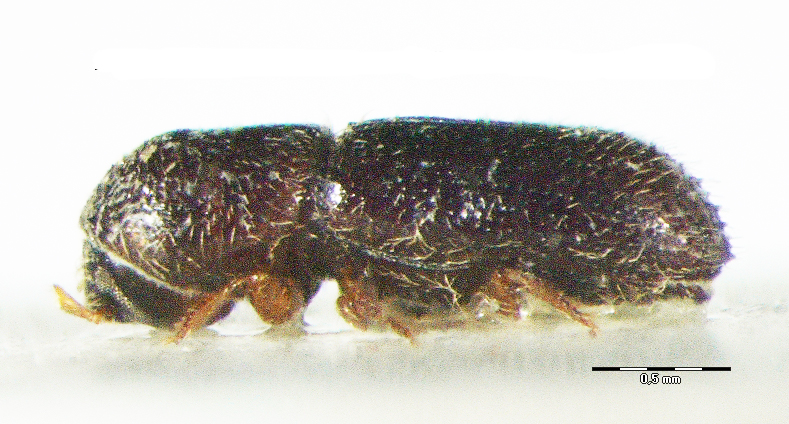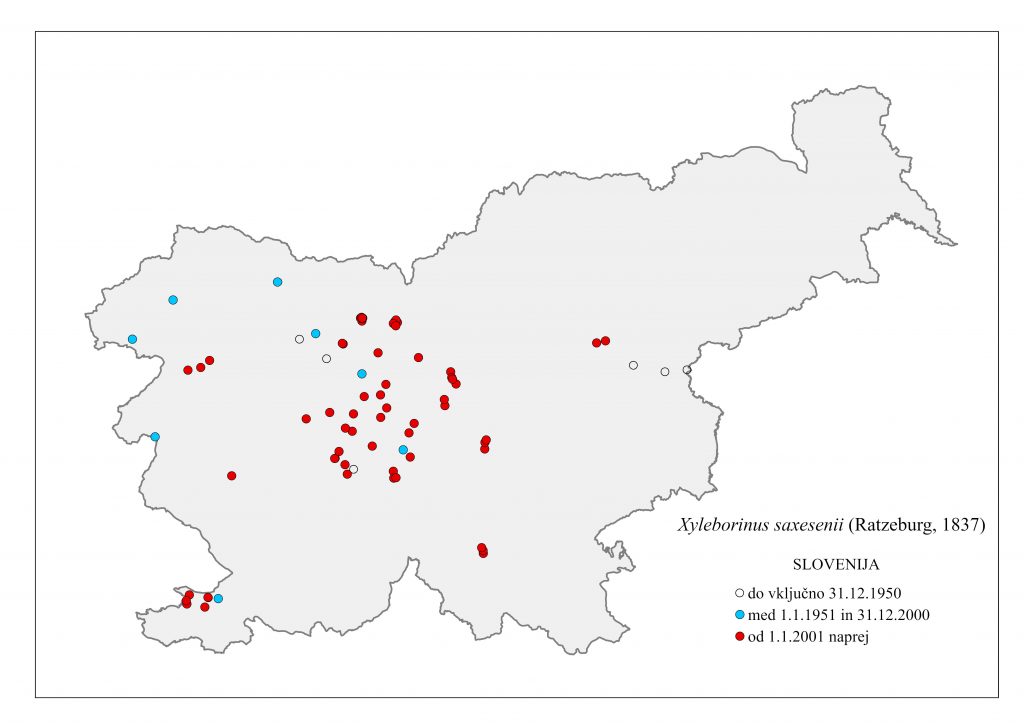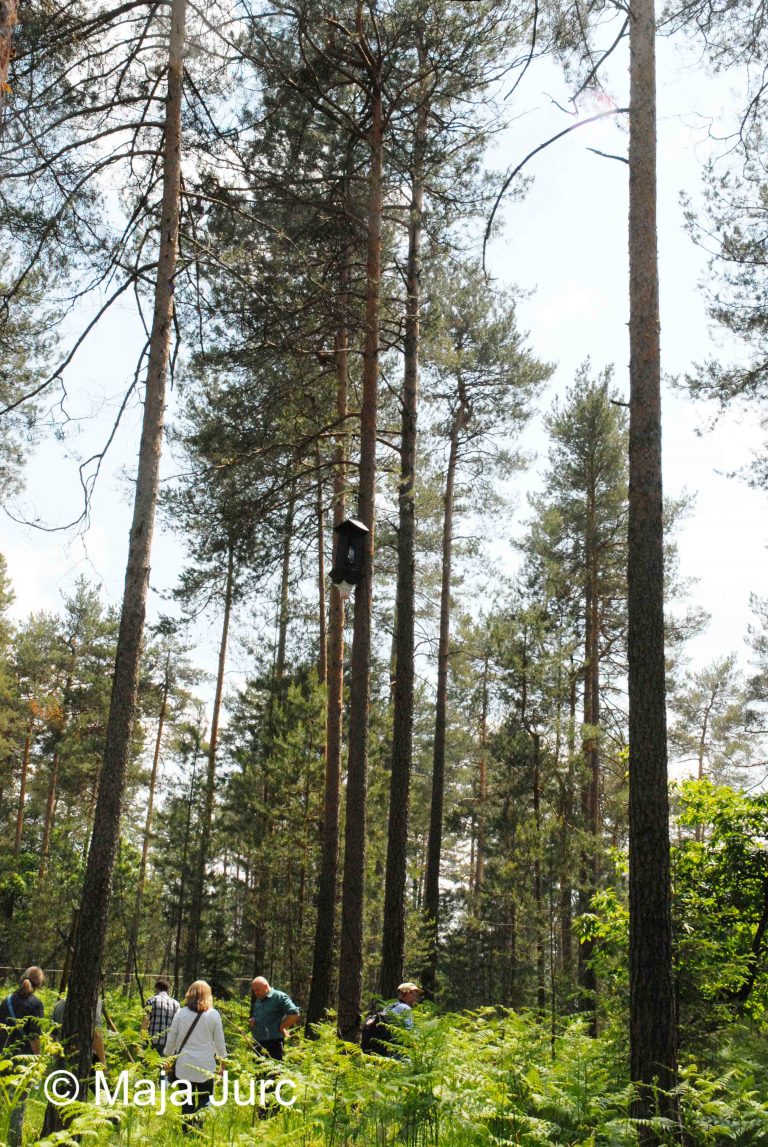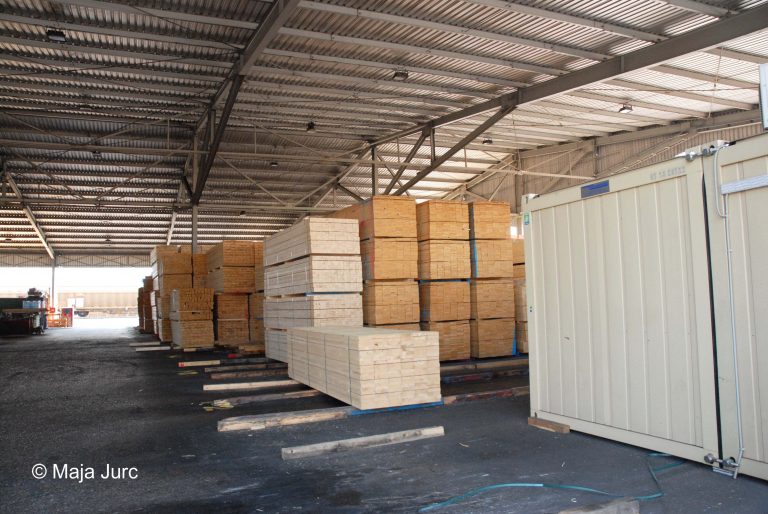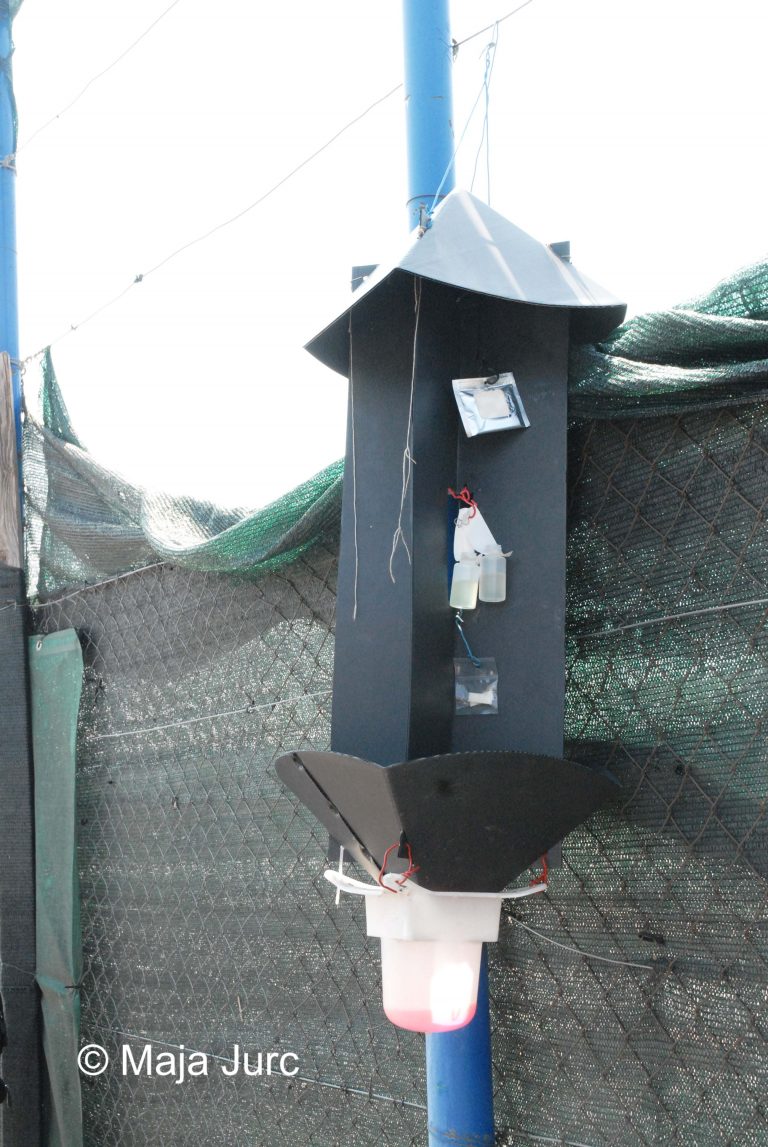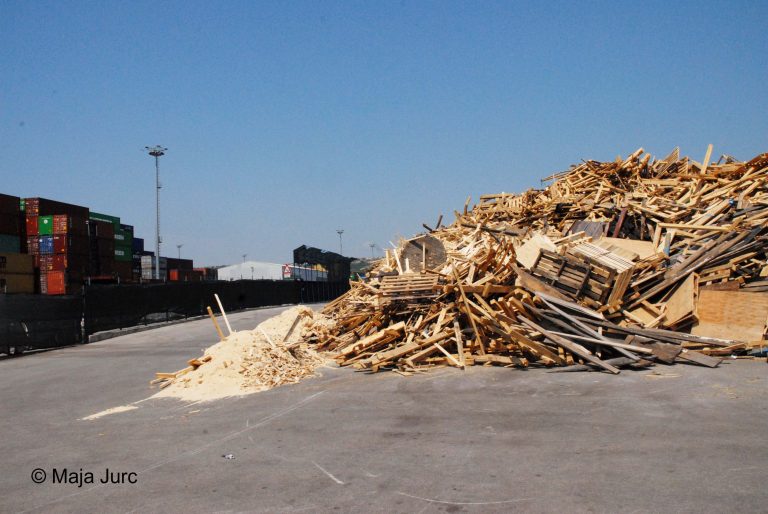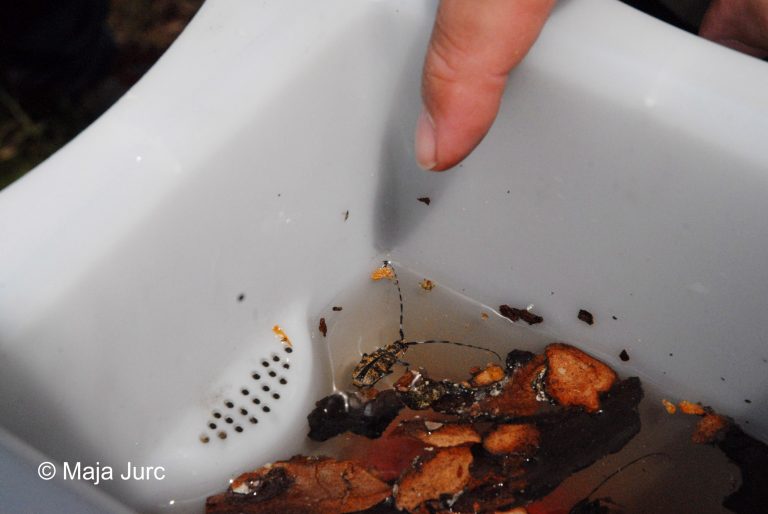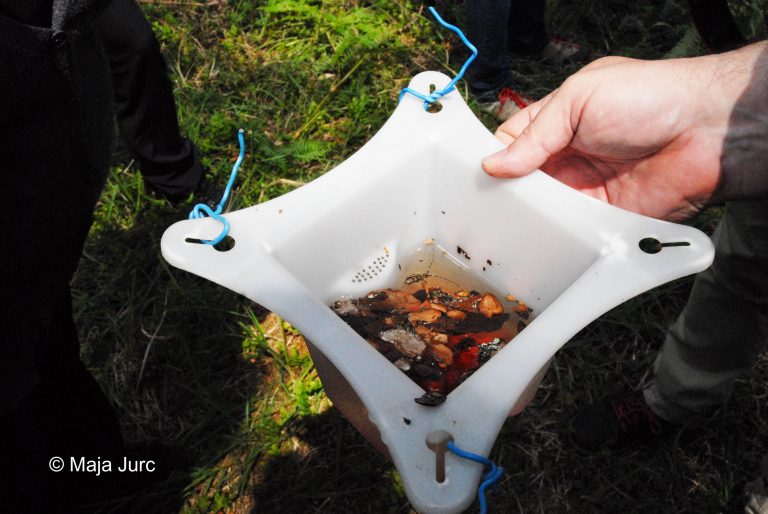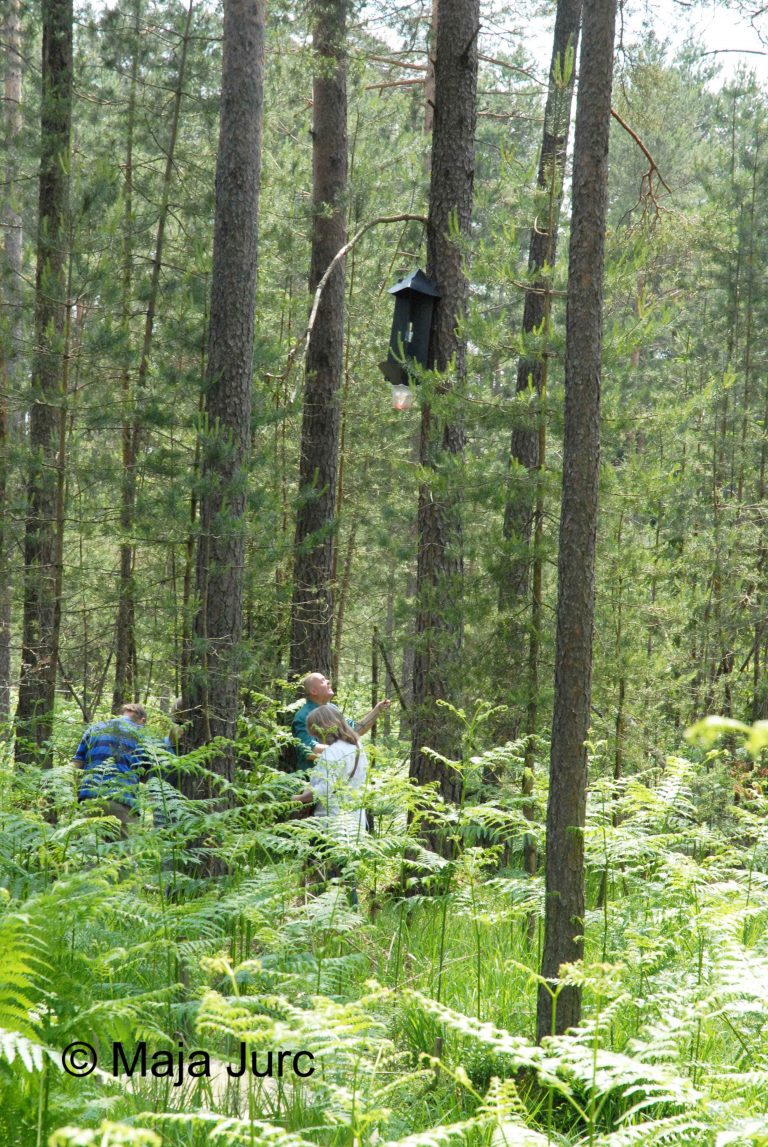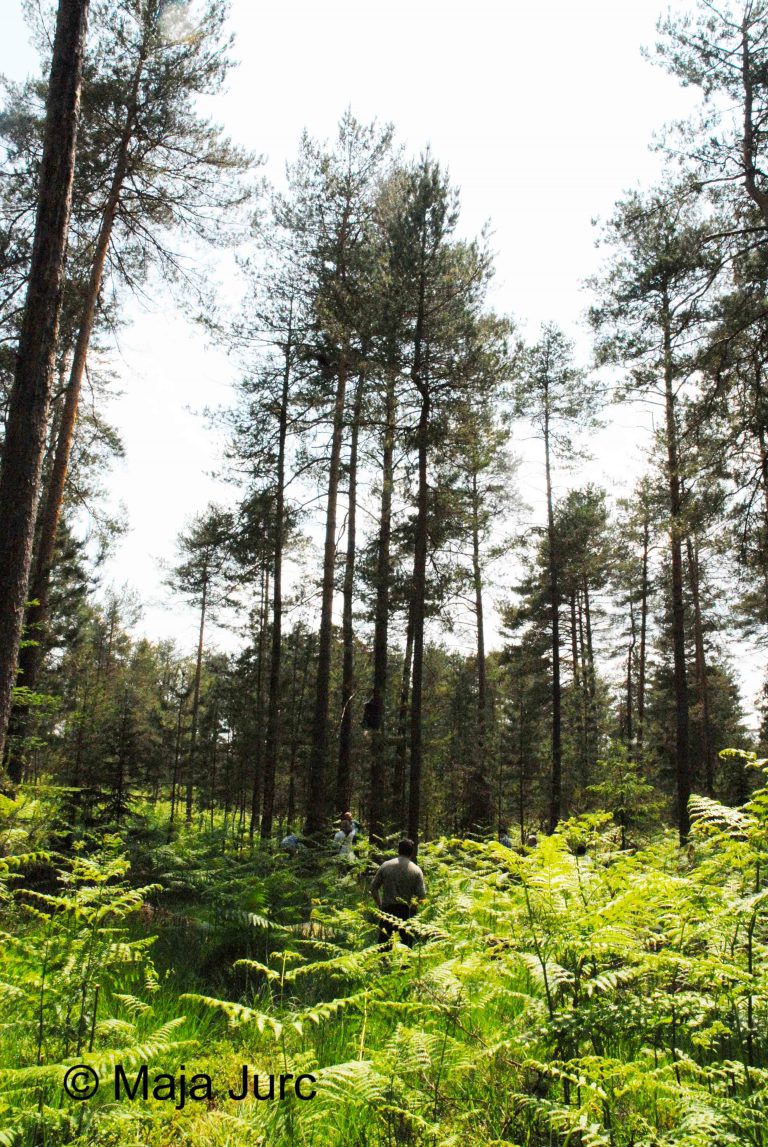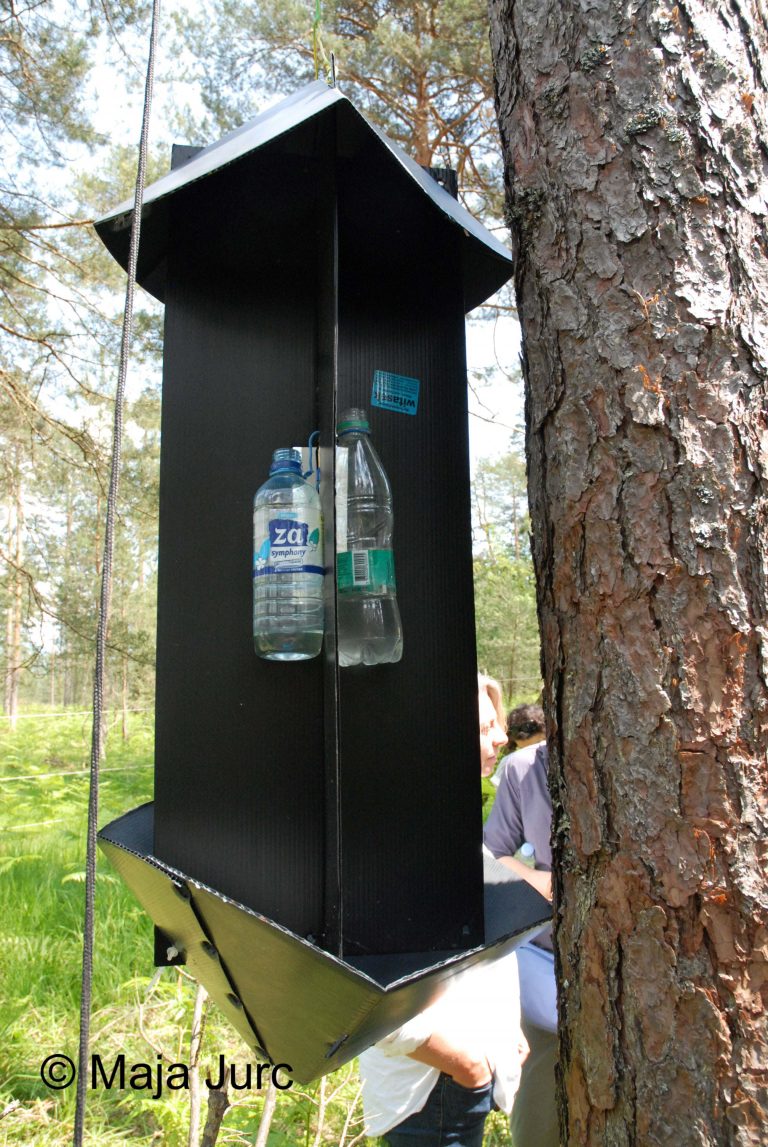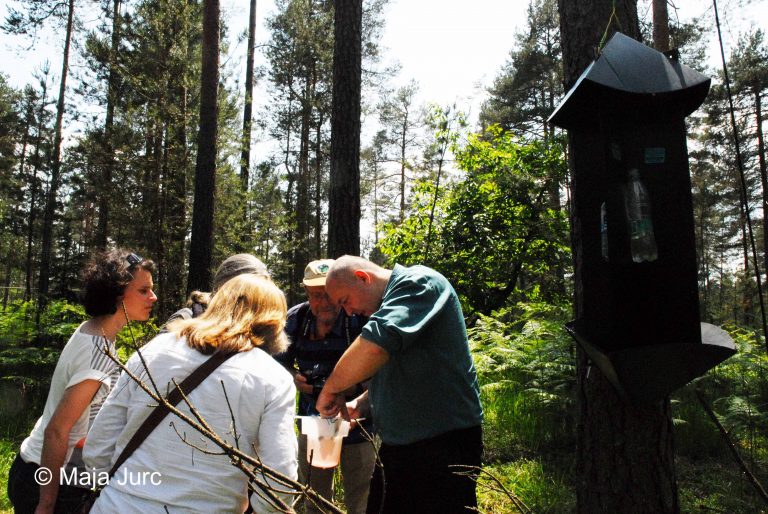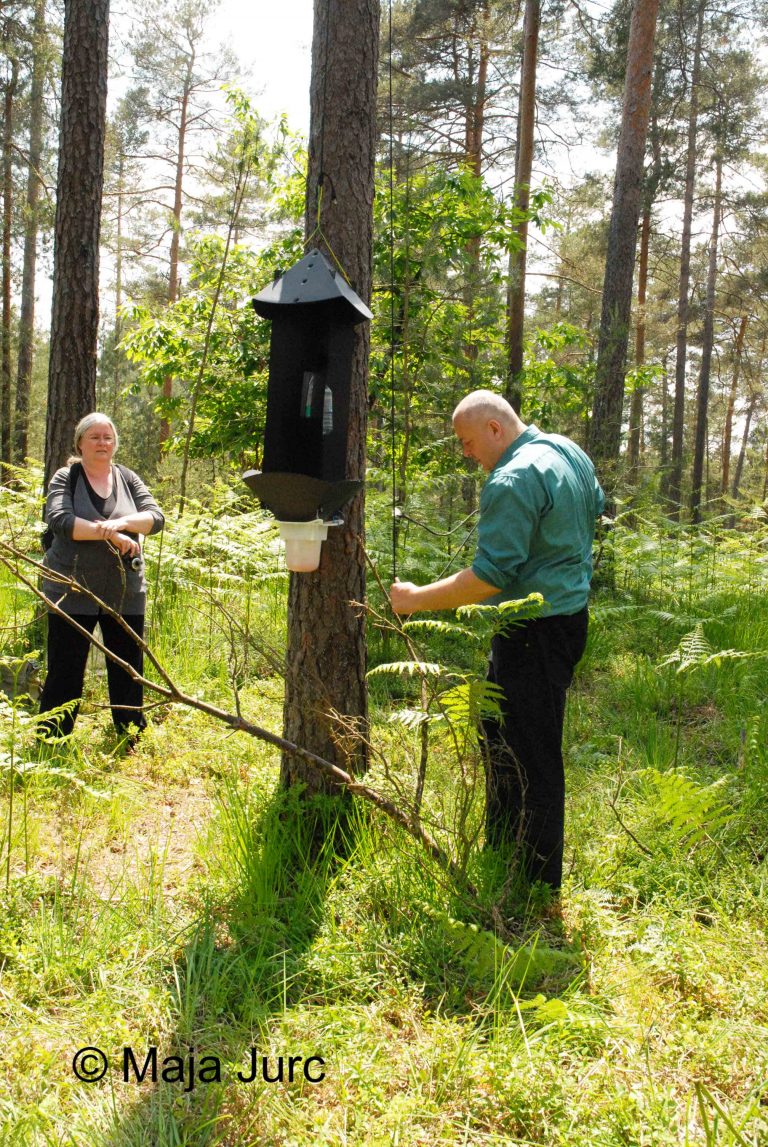36.01. Xyleborinus saxesenii (Ratzeburg, 1837)
Presence
E: AB AL AU AZ BE BU BY CR CT CZ DE EN FR GB GR HU IT LA LT LU MA MC MD NL NR NT PL PT RO SK SL SP ST SV SZ UK YU »Caucasus«
N: AG CI EG LB MO MR TU
A: ANH ES FE FUJ GUI GUX HEB HEI HUN IN IS JA JIA JIL JIX KA KI KZ MG NC NE NIN SC SCH SD SHA SHX SY TAI TD TM TR UP WS XIZ YUN ZHE
AFR
AUR
NAR
NTR
ORR
Figure 171: Xyleborinus saxesenii, dorsal, lateral (Photo: Maja Jurc)
Older catalogs and keys – citations of name
Grüne 1979: Xyleborus saxeseni Ratzeburg, 1837; Freude, Harde, Lohse 1981: Xyleborinus saxeseni Ratzeburg; Pfeffer & Knížek 1993: Xyleborus saxeseni (Ratzeburg, 1837), Pfeffer 1995: Xyleborus saxesenii (Ratzeburg, 1837).
Figure 172: Xyleborinus saxesenii, distribution map according to historical and recent data
Ecology and presence in Slovenia
The species is distributed in Europe, Central Asia, the Caucasus, Iran, Asia Minor, Mongolia, northern China, Korea, Japan, the USA, Canada, Australia and Brazil. The distribution of the species in Slovenia has been underestimated, and it is one of the most common species of bark beetle in the country, with only Koroška and Prekmurje not having any confirmed sites (Figure 172). X. saxesenii is a polyphage on many deciduous trees, Alnus glutinosa, Alnus spp., Aesculus hippocastanum, Betula pubescens, B. pendula, Castanea sativa, Fagus sylvatica, Fraxinus excelsior, F. ornus, Juglans regia, Koelreuteria paniculata, Pyrus communis, P. malus, Populus nigra, Prunus armeniaca, P. avium, P. cerasus, P. domestica, P. padus, P. persica, P. spinosa, Quercus pedunculata, Q. petraea and Sorbus torminalis, less frequently on Carpinus spp, Ulmus spp., Acer spp., Corylus spp., Tilia spp., Salix spp., Malus spp. and Prunus spp.. It sometimes occurs on conifers (Pinus spp., Larix spp., Picea spp., Cedrus spp., Abies spp., Tsuga spp.). X. saxesenii is often caught en masse in traps in our area. In Slovenia, only Quercus petraea (stump), Picea abies (trunks and stumps) and Liquidambar styraciflua (in the nursery) have been recorded as hosts. A xylomycetophagous species, it develops 1-2 generations per year, swarming in April and June. It inhabits mainly the middle parts of the trunks of standing, physiologically weakened or freshly felled trees. The tunnel system is familially planar. At the end of the shallow entrance a radial tunnel (2-7 cm long), the female excavates the maternal galleries, which are oriented along the tree ring. She deposits eggs in these tunnels, the hatched larvae then build their own tunnel (or several tunnels 2-6 cm long), which expand / extend parallel to the wood structure (longitudinally) to form a cavity with a surface area of up to 20 cm2. The species introduces fungi into the tunnels which decompose the wood on which the larvae feed. Males are 1.6-1.8 mm long and females 2.0-2.4 mm. The body is reddish brown to black. The neck shield and the beginning of the elytra are almost hairless. On the elytra apex, blunt, fine denticles are present on the elytra near the elytral suture and in the 3rd and 5th interspaces (Figure 171). The species is very common in mixed deciduous forests. The tunnels are relatively shallow in the wood, so the species is not particularly economically damaging, except when established on precious deciduous trees. It often co-occurs with other phloemophagous and xylomycetophagous bark beetles. It differs from the species Xylosandrus germanus and Xylosandrus crassiusculus in that it does not eject rod-shaped droppings from the tunnel system.

